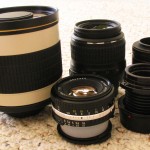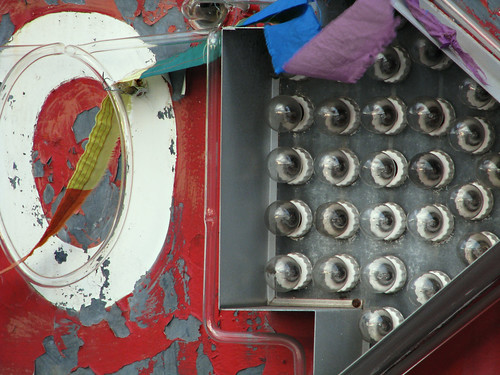I just got my new mirror lens from Adorama on Friday and I spent a good amount of time messing around with it today, stalking some birds and feral cats that hang out in a local parking lot. For what its worth, I should preface that I have been messing around with a 50mm f/1.8 series E for the past couple weeks so I am pretty familiar with shooting in full manual without metering.
So here are some general thoughts. For a full review by Peter Kolonia check out popphoto.com.
Given that I had wanted a 500mm lens and didn’t want to pay big money for it, the Mirror Lens is the way to go. Basically, there is really only one common option (both new and used) – f/8.0. The only alternative is the ProOptic lens from Adorama with f/6.3 (fyi, these lenses come with only one f/stop) My question before purchasing the lens was whether the f/6.3 would be an unforgiving DOF (the manual says 1/2″ at 6′ close focus). After playing around, I agree it is a very thin and unforgiving DOF, but as someone who is used to shooting wide open at f/1.8, it really isn’t that thin!
What did surprise me was lens shake at 500mm. As such I think the extra speed of f/6.3 was WELL worth it. As someone spoiled by f/1.8, going to f/6.3 was a shock. Combined with the desire to keep the shutter speed near the focal length for hand held shooting, I was shooting at iso400 around noon on a sunny bright day. By the time the sun just started setting, I was at iso800.
I found focusing quite smooth. My only gripe with the lens is that I wish there was more barrel that did not rotate while focusing so that I could keep more of my hand supporting the lens while focusing.
People say that mirror lenses are small and unobtrusive. Well they must be speaking in relative terms because is this lens is definitely big enough to be noticed when walking around. It doesn’t help that ProOptic decided to paint the barrel white instead of black. Then again, I haven’t handled a real 500mm lens, but from what I see online, I don’t think you can even really “walk around” with those beasts!
Of course the big question with these lens are the bokeh rings. And I can attest that those mirror lens bokeh rings do really show up any time you give them a chance. But, if you just roll with it, you’ll survive — and even have some extra optical tricks to play with when you get tired of straight photography.
For $160 I think this is basically a no brainer if you have a little money and want to dabble in telephoto photography, as long as you don’t find the funny bokeh rings are as hideous as some people on photo forums like to exclaim.
The 80/20 rule definitely applies, – you get 80% of the function for 20% of the price of a full size 500mm lens.





